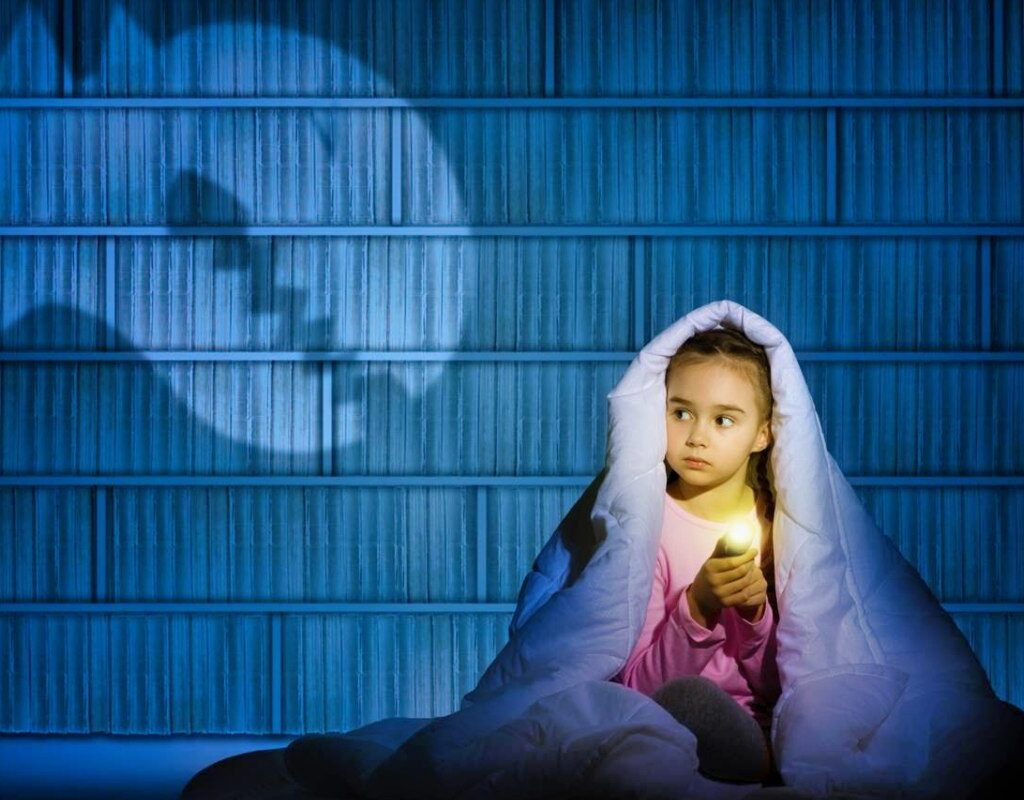Fear is a universal phenomenon, a common thread that is intertwined across all ages and cultures. It is a fundamental element in the human experience. However, when we talk about children the perception and management of fear take on a new approach.
The Fine Line Between Fear and Fascination in Children
Children experience different types of fears. Some of these fears are rational and linked to reality but many are irrational, born of children’s vivid imaginations and the mystery of the unknown.
It’s common and, in fact, part of a child’s normal development to experience fear. But why are children attracted to horror stories despite the fear they generate? How can such a young creature actively seek out what scares them and then suffer for it?
In addition, why do adults often encourage and nurture this mysterious and frightening side of children’s existence?
The answers to these questions may seem contradictory. However, when we look closely at child development and the role of fear and terror in this process, we can begin to understand its complexity.
How childhood terror can help children develop emotional coping skills
Horror stories, tales of monsters and ghosts, scary movies and scary games seem to be an integral part of childhood. Children and monsters seem to coexist in the same universe, playing and interacting in varied and often disconcerting ways.
But is this interaction normal? Or should we strive to protect children from fanciful fear?
Terror in childhood is a vehicle for exploring and confronting the idea of death. By playing with death and its reversibility as in video games, children can experience and learn about this inevitable facet of life in a safe and controlled way.
It could be a useful tool for children to process their fears. However, like any powerful tool, terror has its risks and can be harmful if used inappropriately.
A poorly assimilated scare can be traumatic for a child and when adults use fear as punishment, they risk causing long-term problems.
The consequences can range from phobias to anxiety disorders. Similarly, access to inappropriate content can be harmful, underscoring the importance of monitoring the information that children receive.
Open dialogue on childhood fear: keys to effective communication with children
To help children navigate this emotional minefield there are certain guidelines that parents and caregivers should follow.
First of all, terror should never be used as a means to punish or ridicule children. Fear should not be an instrument of discipline but rather an experience of learning and growth.
Second, we must provide quality entertainment for our children. That means understanding the content and origin of the material. It’s crucial to consider the child’s age when selecting horror material since a scary story intended for a ten-year-old can be overwhelming for a four-year-old.
The child’s mood and personality are important factors. Some children are more sensitive than others and may not be ready to face terror. In addition, there are stages of childhood in which children are particularly vulnerable.
Helping Children Understand and Cope with Fear: Practical Tips for Adults
In short, fear and terror are an integral part of the childhood experience. Far from being completely negative, they can provide children with a means to explore and understand the world. However, as adults, we have a responsibility to guide and protect children in this exploration.
The most important thing is to be present for our children to observe their reactions, to share their experiences and to listen to them when they express their fears. Dialogue and open communication are essential to helping children manage their fears and learn from them.
Fear is an element of childhood but with proper guidance, it can become a healthy part of a child’s emotional development.
Our role as adults is not to eliminate fear but to help children understand it, manage it and ultimately, grow from it. As such, we need to take a balanced and conscious approach to fear and terror in our children’s lives.

